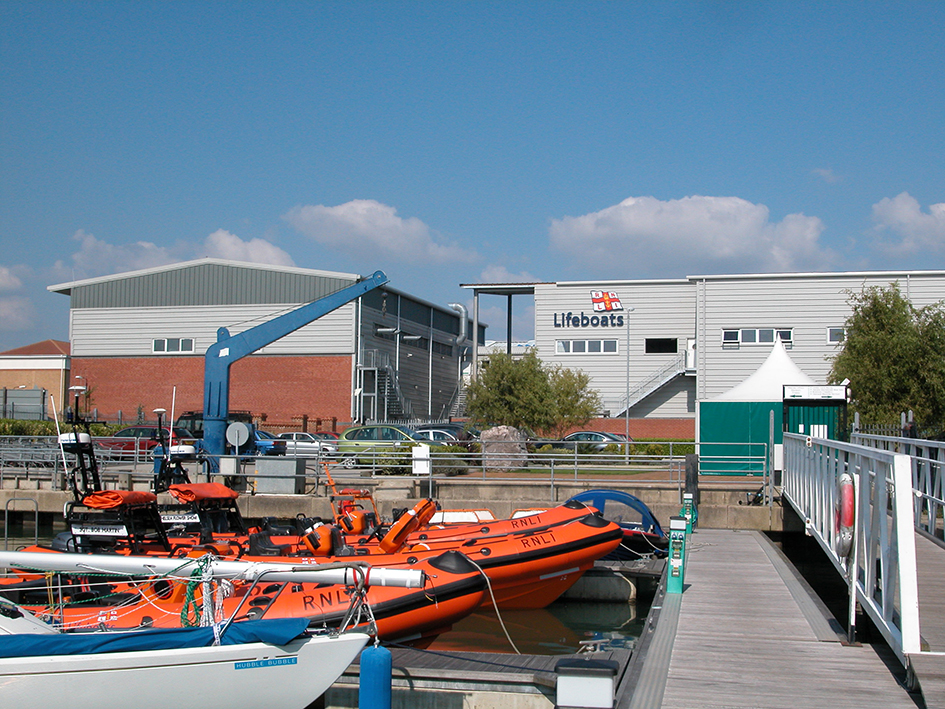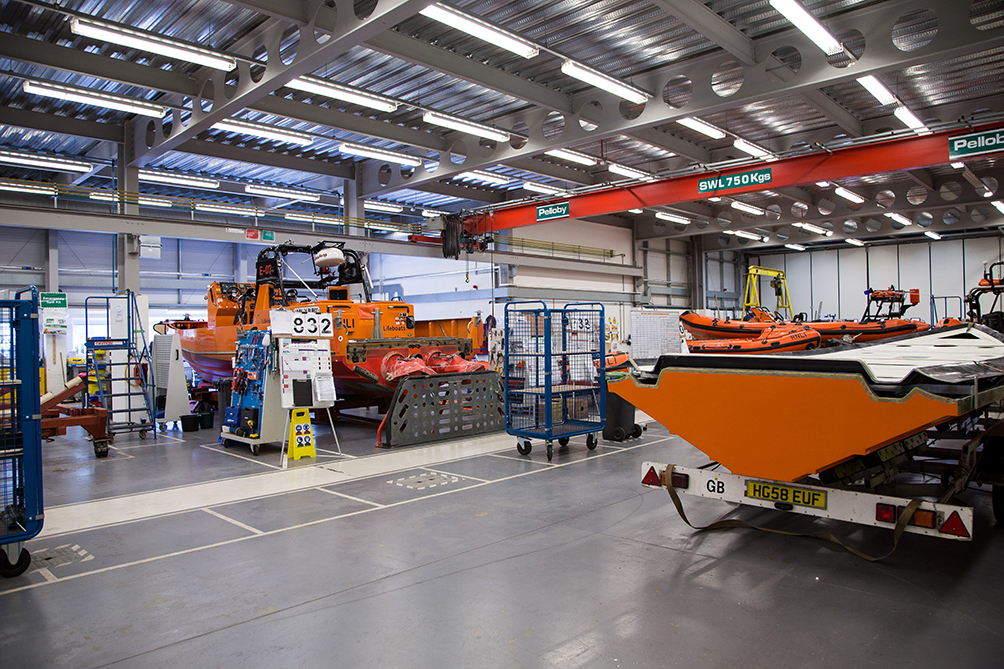A group from Cowes Sailability Club gained a privileged peak behind the scenes of the Royal National Lifeboat Institution’s Inshore Lifeboat Centre in East Cowes.


Members and volunteers from Cowes Sailability Club had the opportunity to visit the RNLI Inshore Lifeboat Centre (ILC) in East Cowes on 23rd June 2016. The group was amazed to discover that as many as 50 rigid inflatable lifeboats are constructed at this purpose-built manufacturing facility every year, while a further 200 RNLI vessels are serviced and refurbished here annually.
During the course of the tour, the group learned how every stage in the boat building and maintenance process is precisely managed to keep to a tight time-scale. Skilled tasks are carried out by a workforce of around 70 people, including many women who perform roles ranging from upgrading electrical components to cutting out boat parts with specialist equipment.
Cowes Sailability Club member Sue Harold participated in the tour along with her guide dog Ula. She says, “I didn’t need to be able to see well to appreciate all of the information that we were given about the boat-building activities at the Inshore Lifeboat Centre. The smells conjured up what was being done in the workshops and Ula led me easily along the clear walkways.”
The tour was organised by Philippe Wines, the Cowes Sailability Club bosun. “We were particularly impressed to learn about how employees at the RNLI are constantly proposing and implementing improvements to their working practices to increase efficiency,” he says. “In this way, the charity is really making the best use of every penny donated by the public, which is vital given it relies almost entirely on voluntary contributions.”
Like other club members who enjoy sailing and boating in the waters around the Isle of Wight, Sue is full of appreciation for the work of the RNLI. “The visit brought back many memories from when my husband and I were rescued by a lifeboat, when he fell overboard. What would all the sea-going people do without the RNLI’s invaluable service?”

The RNLI has been saving lives at sea since it was established in 1824. Today it operates lifeboats at 236 coastal stations and lifeguards on more than 220 beaches, as well as a Flood Rescue Service which can be called into action in emergencies. The RNLI relies on people giving up their time for free and 95 per cent of its people are volunteers. To find out more about the RNLI, visit www.rnli.org.uk
